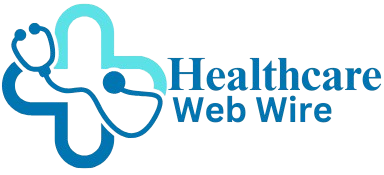
The global clear aligners market is expected to grow from USD 6.51 billion in 2024 to USD 99.44 billion by 2034, at a remarkable CAGR of 31.34%, driven by rising dental aesthetics awareness, AI adoption, and 3D printing technologies in orthodontics.

Download this Free Sample Now and Get the Complete Report and Insights of this Market Easily @ https://www.towardshealthcare.com/download-sample/5614
Market Size
Global Market Size:
◉2024: USD 6.51 Bn.
◉2025: USD 8.55 Bn.
◉2034 Projection: USD 99.44 Bn.
◉CAGR: 31.34% between 2025–2034, indicating exponential growth due to technological adoption and awareness.
Segment-Wise Growth Insights (Non-Application Segments):
Age Segments:
◉Adults: Dominated in 2024 due to convenience, aesthetics, and increasing acceptance of personalized orthodontics.
◉Teens: Fastest-growing segment; driven by malocclusion prevalence, parental awareness, and aesthetics.
Material Type:
◉Polyurethane: Dominant due to transparency, flexibility, strength, comfort, and high patient acceptance.
◉Distribution Channels:
◉Offline: Largest segment in 2024 because of trusted in-person orthodontic consultations and safety assurance.
◉Online: Fastest-growing segment; provides affordability, convenience, and tele-orthodontic services.
End Users:
◉Standalone Practitioners: Leading segment due to personalized treatment offerings, access to advanced technologies, and high patient satisfaction.
◉Regional Market Insights:
◉North America: Leading due to established healthcare infrastructure, AI integration, and technological adoption.
◉Asia-Pacific: Fastest-growing region, fueled by industrial development, urbanization, and dental awareness.
Market Trends
Technological Advancements:
◉AI integration in treatment planning and 3D printing for precise aligner fabrication.
◉Orthobrain® raised $7.5 million in April 2025 for expansion, reflecting investor confidence in AI-driven orthodontics.
Patient-Centric Approach:
◉Clear aligners offer comfort, removability, invisibility, and reduced pain vs. braces.
◉Rescue aligners (OrthoFX) improve patient experience and reduce clinic visits.
Shift from Conventional Braces:
◉Decline in lingual braces in the U.S., replaced by digital clear aligner solutions with improved materials and 3D scanning.
Increasing Awareness:
◉Campaigns and programs highlighting oral health are raising demand for aesthetic orthodontic solutions.
Aesthetic Dentistry Growth:
◉Rising adult population seeking cosmetic improvements in dental alignment is driving market expansion.
Tele-orthodontics Adoption:
◉AI and online platforms allow remote consultations, improving patient access and reducing costs.
Dental Tourism Impact:
◉Regions like Mexico and Brazil attract international patients due to affordability and high-quality treatment.
AI Impact / Role
Advanced Treatment Planning:
◉AI uses patient scans to predict tooth movement, optimize aligner design, and reduce errors.
Remote Monitoring & Teledentistry:
◉Platforms like DentalMonitoring provide real-time feedback, reducing in-person visits and improving compliance.
Material and Design Optimization:
◉AI assists in customizing polyurethane and other materials for comfort, transparency, and durability.
Predictive Clinical Analytics:
◉AI predicts root resorption, treatment duration, patient adherence, and potential complications.
Surgical & Extraction Assistance:
◉Provides accurate recommendations for tooth extraction and orthognathic procedures.
Integration with Orthodontic Growth Systems:
◉Orthobrain® and similar AI systems enable adaptive, patient-specific treatment protocols.
Operational Efficiency:
◉AI optimizes manufacturing workflows, reduces waste in 3D printing, and improves production scalability.
Regional Insights
North America
◉Drivers: Advanced healthcare, high disposable income, early adoption of AI and 3D printing.
◉U.S.: Increasing demand for aesthetic, effective, and minimally painful orthodontic treatments.
◉Canada: Rising awareness and adoption of new materials enhancing patient satisfaction and treatment outcomes.
Asia Pacific
◉Drivers: Industrial growth, dental awareness campaigns, and technology adoption.
◉China: Rapid investment in research and industrial automation in aligner production.
◉India: Innovations in orthodontic technology and government programs to enhance affordability.
◉South Korea & Japan: Emphasis on cosmetic dentistry and AI-enabled orthodontics.
Europe
◉Drivers: Increasing demand for aesthetic dentistry and adult orthodontics.
◉Germany: Focus on patient comfort, advanced materials, and technology-driven clinics.
◉UK & France: Industry collaboration to enhance aesthetic development and treatment options.
Latin America
◉Drivers: Growing dental tourism, cost-effective treatments, skilled professionals, and robust infrastructure.
◉Mexico: Cities like Tijuana and Cancun attract patients globally; clear aligner prices $2,000–$8,000.
◉Brazil: ~360,865 dentists, high adoption of state-of-the-art technology, and stringent safety standards.
Middle East & Africa (MEA)
◉Rising awareness of oral health, increasing disposable income, and adoption of modern orthodontics.
Market Dynamics
Drivers
◉Rising awareness of dental hygiene and aesthetic dentistry.
◉Increasing adult orthodontic population seeking comfort and invisibility.
◉Technological innovations including AI, 3D printing, and tele-orthodontics.
◉Supportive healthcare policies and campaigns.
Restraints
◉High cost of treatment limits adoption in low-income populations.
◉Clinics require advanced software and equipment, increasing entry barriers.
Opportunities
◉Integration of AI in aligner fabrication and remote patient monitoring.
◉Expanding aesthetic dentistry and dental tourism markets.
◉Material innovations improving comfort, durability, and transparency.
Top Companies

Align Technology, Inc.:
◉Product: Invisalign clear aligners, 3D scanners.
◉Overview: Global medical device company; Q4 2024 revenue $995.2M; full-year 2024 revenue $4.0B (clear aligners $3.2B).
◉Strengths: Strong manufacturing scale, advanced digital orthodontic solutions, market leader in clear aligners.
Henry Schein Inc.:
◉Product: Medical & dental supplies, vaccines, pharmaceuticals, financial services, equipment.
◉Overview: Q4 2024 net sales $3.2B; full-year 2024 $12.7B.
◉Strengths: Extensive distribution network, diverse portfolio, strong global presence.
3M ESPE:
◉Product: Dental adhesives, aligners, orthodontic solutions.
◉Strengths: R&D-driven innovations, global reach, brand trust.
Dentsply Sirona:
◉Product: Dental instruments, restorative materials, clear aligners.
◉Strengths: Comprehensive dental solutions, technological integration, strong distribution.
SmileDirect Club:
◉Product: Direct-to-consumer clear aligners, teledentistry platform.
◉Strengths: Online reach, affordability, tele-orthodontic model.
TP Orthodontics Inc:
◉Product: Orthodontic appliances, clear aligners.
◉Strengths: Focused R&D, global market penetration, technology adoption.
Angel Aligner & Institute Straumann:
◉Products: Clear aligners, orthodontic equipment.
◉Strengths: Advanced 3D printing, automated manufacturing, patient-centered care.
Latest Announcements
April 2025: OrthoFX – Rescue Aligners
◉Objective: Enhance patient experience without extending treatment duration.
Significance:
◉Reduces the need for repeated in-clinic visits.
◉Minimizes aligner replacement delays, digital scans, and administrative workload.
◉Supports orthodontic practices in maintaining high patient satisfaction and treatment efficiency.
Impact on Market: Likely to increase adoption among adults and teens due to convenience and reliability.
◉Feb 2025: Align Technology – Manufacturing Scale & Competitiveness
◉Highlights: Large-scale manufacturing capacity ensures consistent production quality.
Advantages over Competitors:
◉Faster delivery of Invisalign and other aligners.
◉Strong R&D ensures continuous material and design innovation.
Market Implication: Reinforces Align Technology’s market dominance and strengthens investor confidence.
April 2025: Angelalign Technology – New Manufacturing Facility, Wisconsin
Details:
◉Automated facility utilizing proprietary 3D printing technology.
◉Creates ~200 jobs in North America.
Benefits:
◉Higher production efficiency and scalability.
◉Reduces cost per aligner while maintaining quality.
◉Supports North American market expansion.
March 2025: LuxCreo – Entry into European Market with 4D Aligner™
Features:
◉MDR CE Class IIa certified direct print aligner.
◉Uses patented ActiveMemory™ Polymer for superior flexibility and shape memory.
Implications:
◉Brings advanced 3D printing technology to Europe.
◉Enhances precision and comfort for patients.
◉Positions LuxCreo as a technological leader in the European market.
Recent Developments
◉AI Collaboration: DentalMonitoring & Ormcotm Corporation
◉Focus: AI-powered remote monitoring of orthodontic treatments.
◉Launch: AAO 2025 Annual Session.
Benefits:
◉Enables real-time progress tracking without frequent clinic visits.
◉Improves patient compliance and treatment outcomes.
◉Integrates seamlessly with tele-orthodontic platforms.
Funding: Orthobrain® Expansion
◉Amount: $7.5 million from CareCapital, JumpStart Ventures, and JobsOhio.
◉Purpose: Expansion of AI-driven orthodontic systems.
Impact:
◉Encourages innovation in AI-enabled treatment planning.
◉Supports development of predictive analytics for patient treatment compliance.
Material Advancements: Polyurethane Dominance
◉Reason: Provides high transparency, flexibility, strength, and comfort.
Market Implication:
◉Enhances patient acceptance rates due to aesthetic appeal.
◉Supports longer wear times and durability, reducing replacement frequency.
Technological Expansion: AI + 3D Printing
◉Objective: Streamline aligner fabrication and reduce costs.
Outcomes:
◉Faster production cycles.
◉Reduced manual labor and error rate.
◉Scalable manufacturing to meet rising global demand.
Segments Covered
1. By Age
Adults (Dominant Segment):
◉Driven by aesthetic consciousness and professional requirements.
◉Prefer invisible, comfortable treatment compared to traditional braces.
◉Adults who missed earlier orthodontic treatment are increasingly adopting clear aligners.
Teens (Fastest-Growing Segment):
◉Rising incidence of malocclusion and orthodontic awareness among parents.
◉Aesthetic appeal and removable features make aligners preferable over braces.
◉Integration with AI and telemonitoring increases compliance and convenience.
2. By Material Type
Polyurethane (Dominant):
◉Offers transparency for aesthetic appeal.
◉Flexibility ensures comfortable fit and gradual tooth movement.
◉Durable and suitable for complex orthodontic movements.
Plastic PETG & Others:
◉PETG offers affordability but less flexibility than polyurethane.
◉Other materials are used for niche treatments or cost-sensitive markets.
3. By Distribution Channel
Offline (Dominant):
◉Ensures direct consultation with orthodontists.
◉Builds trust and patient confidence due to in-person assessment.
◉Supports complex treatments requiring professional supervision.
Online (Fastest-Growing):
◉Enables tele-orthodontic services with remote monitoring.
◉Affordable and convenient for tech-savvy patients.
◉Growth is boosted by AI integration and DIY aligner models.
4. By End-Use
Standalone Practitioners (Dominant):
◉Offer personalized treatment options.
◉Early adopters of AI and 3D printing, improving efficiency and patient satisfaction.
Hospitals & Group Practices:
◉Cater to bulk or specialized cases.
◉Often combine orthodontic services with other dental or medical treatments.
5. By Region
North America (Dominant):
◉Early technology adoption and robust healthcare infrastructure.
◉Integration of AI, 3D printing, and advanced tele-orthodontics.
Asia-Pacific (Fastest-Growing):
◉Industrial growth, increasing urban dental awareness, and affordability.
◉China: Technological adoption for mass production.
◉India: Government programs improve accessibility and affordability.
Europe:
◉Focus on aesthetic dentistry, especially among adult population.
◉Germany and UK: High adoption of AI-based treatment and advanced materials.
Latin America:
◉Growing dental tourism.
◉Mexico and Brazil attract international patients due to cost-effective treatment and skilled professionals.
Middle East & Africa (MEA):
◉Growing oral health awareness.
◉Increasing adoption of modern orthodontic practices.
Top 5 FAQs
Q1: What is the projected market size of clear aligners by 2034?
A: The market is projected to reach USD 99.44 billion by 2034 at a CAGR of 31.34%.
Q2: Which age segment dominates the clear aligners market?
A: The adult segment dominated in 2024, while teens are the fastest-growing.
Q3: What material is most commonly used in clear aligners?
A: Polyurethane dominates due to its strength, flexibility, transparency, and patient comfort.
Q4: How is AI impacting the clear aligners market?
A: AI is used for advanced treatment planning, teledentistry, material optimization, predictive analytics, and operational efficiency in production.
Q5: Which region leads the global clear aligners market?
A: North America is the leading region, driven by advanced healthcare, early technology adoption, and high disposable income.
Access our exclusive, data-rich dashboard dedicated to the dental sector – built specifically for decision-makers, strategists, and industry leaders. The dashboard features comprehensive statistical data, segment-wise market breakdowns, regional performance shares, detailed company profiles, annual updates, and much more. From market sizing to competitive intelligence, this powerful tool is one-stop solution to your gateway.
Access the Dashboard: https://www.towardshealthcare.com/access-dashboard
Immediate Delivery Available | Buy This Premium Research @ https://www.towardshealthcare.com/price/5614
Become a valued research partner with us – https://www.towardshealthcare.com/schedule-meeting
You can place an order or ask any questions, please feel free to contact us at sales@towardshealthcare.com
Powering Healthcare Leaders with Real-Time Insights: https://www.towardshealthcare.com/healthcare-intelligence-platform
Europe Region – +44 778 256 0738
North America Region – +1 8044 4193 44
APAC Region: +91 9356 9282 04
Web: https://www.towardshealthcare.com
Find us on social platforms: LinkedIn | Twitter | Instagram | Medium | Pinterest




